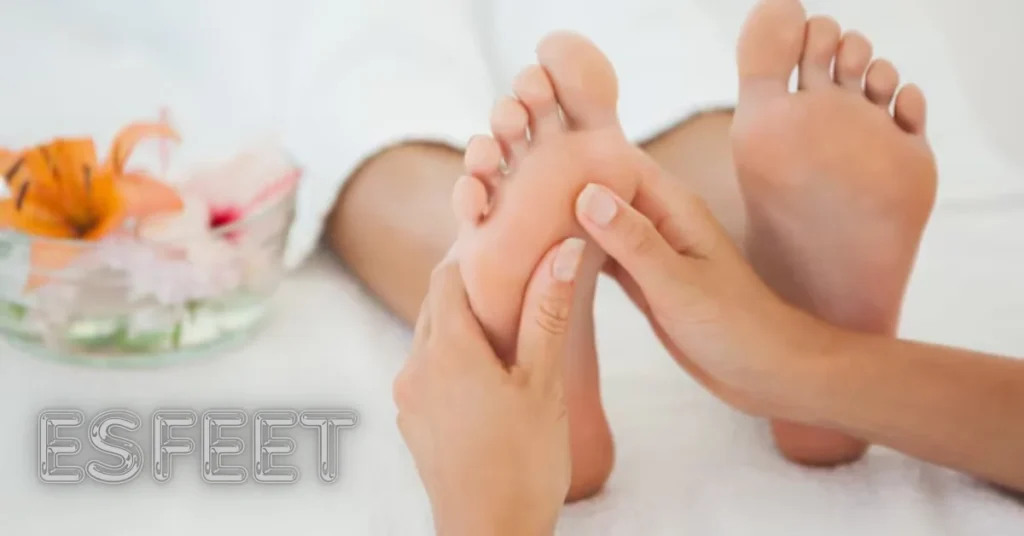Introduction to esfeet
Have you ever experienced discomfort in your feet that just won’t go away? If so, you might be dealing with a condition known as esfeet. This troublesome issue affects many people but often goes unnoticed until it becomes severe. Understanding esfeet is essential to maintaining your foot health and overall well-being. In this post, we’ll delve into what esfeet really means, the signs to watch for, its underlying causes, and the best ways to tackle it effectively. Whether you’re experiencing symptoms or simply want to learn more about preventive measures, there’s valuable information ahead that can help keep your feet happy and healthy!
What is Esfeet and its symptoms?
Esfeet refers to a condition that affects the feet, often leading to discomfort and pain. This term encompasses various issues that can arise due to structural abnormalities or repetitive strain on foot muscles.
Common symptoms include persistent aching in the arch or heel, making it difficult to walk comfortably. Individuals may also experience swelling, tenderness, or stiffness after periods of inactivity.
Some might notice changes in their gait as they subconsciously adjust how they walk to avoid discomfort. Redness and warmth around affected areas are additional signs that should not be overlooked.
It’s crucial for anyone experiencing these symptoms to pay attention. Early detection can greatly influence the effectiveness of treatment options available down the line. Make sure you listen closely to your body; early warning signs shouldn’t be ignored when it comes to foot health.
Causes of Esfeet
Esfeet can arise from various factors that put stress on the feet. One of the most common causes is excessive weight or obesity. This added pressure strains foot structures, leading to discomfort and deformities.
Improper footwear is another significant contributor. Shoes that lack support or fit poorly can lead to misalignment and pain over time. High heels are notorious for causing issues, as they shift body weight forward.
Injury also plays a role in developing esfeet. Trauma from falls, sports activities, or accidents can alter foot mechanics and promote the condition.
Genetics cannot be overlooked either. A family history of foot problems may predispose individuals to develop esfeet as well.
Certain medical conditions such as arthritis increase vulnerability by affecting joint stability and mobility in the feet. Recognizing these underlying causes is crucial for effective management strategies later on.
The Importance of Early Detection and Treatment
Early detection of esfeet can significantly impact treatment outcomes. When caught in the early stages, many patients experience less pain and discomfort.
Identifying symptoms promptly allows for timely intervention. This proactive approach helps prevent progression to more severe conditions that may require extensive treatments or surgical options.
Regular foot check-ups play a crucial role in spotting signs of esfeet. It’s easy to overlook minor aches, but those small signals can lead to larger issues if ignored.
Additionally, understanding your risk factors is vital. Genetics, lifestyle choices, and activity levels can all contribute to the development of this condition.
Seeking help at the first sign of trouble empowers individuals on their healing journey. The sooner one addresses concerns about esfeet, the better chance they have for an effective recovery plan tailored to their needs.
Non-Surgical Solutions for Esfeet
When it comes to managing esfeet, non-surgical solutions often provide effective relief. One popular option is physical therapy. Targeted exercises can strengthen the surrounding muscles and improve flexibility.
Orthotic inserts are another great choice. They cushion your feet and help in correcting alignment issues, which can significantly reduce discomfort.
Lifestyle modifications play a crucial role too. Maintaining a healthy weight reduces pressure on your feet, easing symptoms over time.
Footwear also matters greatly. Choosing supportive shoes with adequate cushioning can make daily activities more manageable and less painful.
Additionally, applying ice packs or using heat therapy may alleviate inflammation and soothe aching areas. Regularly stretching your feet can enhance mobility and prevent stiffness as well.
Combining these methods often yields better results than relying on one approach alone. It’s all about finding what works best for you.
Surgical Options for Severe Cases
For severe cases of esfeet, surgical options may become necessary. These procedures aim to address structural issues that contribute to pain and discomfort.
One common surgery is the osteotomy. This involves realigning bones in the foot to improve function and reduce pressure on affected areas. It can provide significant relief for those struggling with chronic symptoms.
Another option is tendon lengthening or transfer. This procedure alters the tightness of tendons, allowing for better movement and reduced strain on the foot muscles.
In extreme instances, joint fusion might be recommended. By fusing specific joints together, surgeons can eliminate painful motion while providing stability.
Recovery from these surgeries can vary but typically includes rehabilitation focused on restoring strength and mobility. Engaging with a healthcare provider about risks and benefits is essential before proceeding with any surgical intervention for esfeet.
Tips for Preventing Esfeet
Preventing esfeet starts with proper footwear. Choose shoes that provide adequate arch support and cushioning. Avoid high heels or tight shoes, as they can strain your feet.
Regular foot exercises can also make a difference. Stretching and strengthening the muscles in your feet may help maintain flexibility and balance. Simple routines like toe curls or ankle rolls are effective.
Maintaining a healthy weight is crucial too. Excess body weight puts added pressure on your feet, increasing the likelihood of developing esfeet-related issues.
Incorporating breaks during prolonged standing or walking helps relieve stress on your feet. If you work long hours on your feet, try to sit down occasionally and elevate them when possible.
Keep an eye on any changes in foot health. Early detection of unusual symptoms allows for prompt action before more serious problems develop.
Conclusion
Understanding esfeet is crucial for anyone experiencing foot discomfort. This condition can significantly affect mobility and quality of life if left untreated. By recognizing the symptoms early, you empower yourself to seek appropriate care promptly.
It’s essential to address the causes of esfeet, from lifestyle choices to underlying health issues. This awareness can guide preventive measures and treatment options.
There are effective non-surgical solutions available that can alleviate symptoms without resorting to invasive procedures. For those facing severe cases, surgical interventions may provide relief and restore function.
Prevention is always better than cure, so implementing simple strategies into your daily routine can help keep esfeet at bay.
Taking action against esfeet not only improves comfort but also enhances overall well-being. Stay informed and proactive about your foot health—you deserve it!
FAQs
What is esfeet?
Esfeet is a condition causing persistent discomfort or pain in the feet due to factors like structural abnormalities or repetitive strain.
What are common symptoms of esfeet?
Symptoms include aching in the arch or heel, swelling, tenderness, stiffness, and changes in gait.
What causes esfeet?
Causes include excessive weight, improper footwear, injuries, genetic factors, and certain medical conditions like arthritis.
How can esfeet be treated without surgery?
Non-surgical treatments include physical therapy, orthotic inserts, weight management, supportive footwear, and stretching exercises.
When is surgery necessary for esfeet?
Surgery may be needed for severe cases to address structural issues, such as through osteotomy, tendon lengthening, or joint fusion.







